joint project REHSTRAIN
Terrorist attacks on public transportation cause a growing potential for uncertainty amongst the passengers and reinforce the requirements for more security in public transportation, particularly in the field of high-speed train systems.
This means balancing the costs for potential security measures and security technologies and the resulting risk reduction.
As a detailed analysis is very complex due to the huge number of influencing factors, we devote ourselves to this task under the German-French joint project "REsilience of the Franco-German High Speed TRAIn Network" (REHSTRAIN).
REHSTRAIN contributes to the research topic “Research for Civil Security 2012 to 2017“, which has been listed in the publication of the German Federal Ministry for Education and Research (BMBF) about promotion and research projects of the civil security – Critical Infrastructure Protection from 8. January 2014 and is funded by the BMBF.
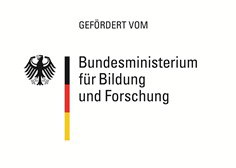

Projectdescription
Project content
The objective of the project is to analyze the vulnerability of the rail-bound GE-FR high-speed train system (ICE, TGV) as a part of critical infrastructure “Transport” in view of threats from terrorism as well as the derivation of measures for the improvement of their resilience.
Resilience is here understood to be the ability of the high-speed system to maintain central functions and system states during and after the impact of threats and to quickly restore impaired functions.
The improvement of the resilience is aided by:
- Defensive measures against threats
- Adjusting the safety requirements to changing threats
- Reducing the vulnerability
- Preparation for the rapid and sustainable coping with the consequences of an attack by the flexible and efficient use of the intervention system.
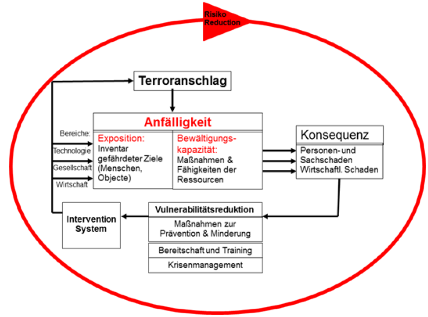
Exposition describes risk elements (persons, objects and facilities) which are exposed to danger in time and space.
Susceptibility means that an exposed element is susceptible to damage in the case of the occurrence of an event (attack).
Coping capacity is counteracting the consequences of an attack using existing opportunities and resources.
The analysis has been realized by a scenario-based comprehensive approach, for which a wide spectrum of potential terrorist attacks on targets of the GE-FR high-speed train system (trains, infrastructure, humans) is analyzed. Furthermore, it is being studied, with which security measures the prevention can be improved as well as the consequences of an attack can be mitigated.
Project results
The current presentations and publications from the projects will be referenced here.
Joint project partners

The "Chair of Operations Research (OR)“ at the Bundeswehr University, Munich (UniBw) focuses mainly on the research field of "Safety and Security". Key disciplines in this context include decision analysis, data mining, network communication, and security of critical infrastructures. The Chair of OR is also responsible for the "Modelling Operations Research Simulation and Experimentation“ (MORSE) project, runs the "Critical Infrastructures and Systems Analysis“ research programme, and is a cooperation partner of the Naval Postgraduate School Monterey/USA in the international experiment "CENTIX" (Centre for Network Innovation and Experimentation) within the scope of which new technologies and methods are being developed with the aim of improving cooperation on, and coordination of, all elements of risk and crisis management through training.
The COMTESSA centre of expertise affiliated to the Chair of OR specialises in applying "soft computing" to crisis and emergency management. Further research projects have included “Intelligent Networks and Security Structures” (INESS), “Critical Infrastructures and System Analysis” (CRISYS), and "Experimental Process Optimisation“ (EXPO). Expertise is also available in the field of optimisation procedures, particularly heuristics. As part of an EU project titled "Network for the Economic Analysis of Terrorism“ (NEAT), the Chair of OR conducted a short study on the topic of "An Economic Impact Analysis on Terrorist Attacks against Public Transport Networks“ (October 2009), which looked at the economic repercussions of terrorist attacks on local public transport. That short study can be regarded as a precursor/feasibility study for the present research project.

Cologne University of Applied Sciences (THK)" is the largest university of its type in Germany. Around 400 professors teach 21,000 students. Its eleven faculties and the Institute for Tropical Technology offer more than 110 fields of study, ranging from engineering, to the humanities and social sciences, to applied sciences. THK is a full member of the European University Association (EUA) and belongs to the UAS7 German Universities of Applied Sciences network as well as to the Innovation Alliance of North Rhine-Westphalian Universities of Applied Sciences. The university is also an environmentally oriented institution, audited and certified to the EMAS (European Eco-Management and Audit Scheme) and to ISO 14001, as well as certified as family-friendly.
The Institute of Rescue Engineering and Civil Protection (IRG) within the Faculty of Process Engineering, Energy and Mechanical Systems (F 09) encompasses all the technical and organisational elements of hazard prevention relating to the rescue of people, the detection of hazards and the planning of their prevention. This also includes regulatory and occupational risk and crisis management as well as social and methodical skills for managerial personnel. In joint research projects the focus is on scientific analysis and on making user expertise available. Students on the University's Rescue Engineering course are also actively integrated into research projects through the assignment of topic-related project papers and bachelor and master theses.

In 2010, various research activities of the Bonn-Rhein-Sieg University of Applied Sciences (HBRS) were pooled within the newly founded Institute for Detection Technologies (IDT) "Making hazards visible, averting dangers" is the guiding principle of our efforts in research and teaching. The development and evaluation of new chemical sensors and detection techniques for identifying and localising hazardous materials and items containing hazardous materials - in particular explosive substances, drugs, mines and explosive devices - is a central field of activity of the Institute for Detection Technologies in the context of averting threats to people and institutions. Extensive research projects in the subject areas of sensor systems, analysis and the detection of explosive substances have been conducted over the past years. It has been possible to build up specific core skills and expertise particularly in the field of sensor and detector assessment and in the development and application of trace analysis procedures.
Work on suitable development services within the scope of national and international research and technology (R&T) projects is ongoing in cooperation with other research institutes, industry, as well as authorities and organisations tasked with providing security and protection. Our expertise in this regard lies in the characterisation of explosive systems and the development of new test and detection techniques, focusing on mobile and standoff-capable sensor platforms, on networks with chemical sensors, and on the research field of "living sensors - explosives detector dogs" for detecting explosive substances in civilian and military scenarios. The Institute has state-of-the-art analysis techniques and detectors at its disposal, especially for the field of trace analysis.

The Federal Institute for Materials Research and Testing (BAM) is a scientific / technical higher federal authority within the area of responsibility of the Federal Ministry for Economic Affairs and Energy. The technological capacity of the Federal Republic of Germany is based to a high degree on competitive products of high quality which has to be assured through innovative measurement and testing technology. The BAM is, according to its founding decree, responsible for the advancement of safety in technology and chemistry, for the implementation and evaluation of physical and chemical tests for materials and facilities including the provision of reference methods and reference materials, for promoting the transfer of knowledge and technology in the BAM's fields of work, for the co-development of statutory regulations such as laying down safety standards and limits, and for giving guidance and advice to the Federal Government, industry and national and international organisations in the fields of material technology and chemistry.
The fields of activity of the Institute's Safety of Structures Department range from building materials to construction engineering, to semi- and non-destructive testing in the building sector, to fire safety engineering. This department advises federal ministries, industry - especially the construction industry, building trade and construction chemicals chemistry - as well as national and international organisations and research institutions in the building sector. A particular activity of the department is determining the long-term behaviour of building materials, components and structures (life span assessment) and their resilience under complex exposure conditions, including the development of relevant assessment methods.

HBI Haerter GmbH is a firm of consulting engineers. The focus of its activities is mainly on the planning, project engineering and implementation of tunnel ventilation systems, on ambient air assessments, on safety issues, and on the aerodynamics and thermodynamics of road and railway tunnels. HBI covers the entire range of possible tasks associated with tunnel ventilation projects - from initial feasibility studies, measurements, in-depth studies and execution, to refurbishments and optimisations during ongoing operation.
With more than 800 successful reference projects to its name, HBI is an international leader in the planning of tunnel ventilation systems. Quality, innovation and reliability are the hallmark of HBI's services.
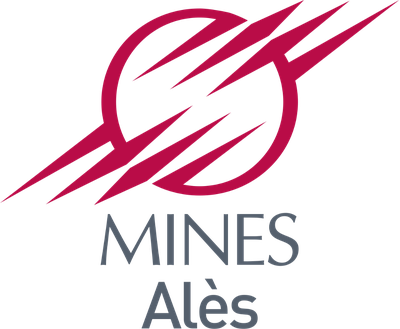
Ecole des Mines d’Alès (EMA) is a French institute for technology and applied sciences under the supervision of the French Ministry for Economic Affairs, Finance and Industry. Its research centre, the Laboratoire de Génie Informatique et d’Ingénierie de Production (LGI2P) founded in 1994, specialises in numerical intelligence. The main topics covered by the LGI2P are new information and communication technologies, in which regard the research centre concentrates on conceptualisation, implementation, optimisation of technical systems, socio-technical systems, and management of collaborative processes.

The Institut Français des Sciences et Technologies des Transports, de l'Aménagement et des Réseaux (IFSTTAR) came into being on 1 January 2011 through the Laboratoire Central des Ponts et Chaussées (LCPC) merging with the Institut National de Recherche sur les Transports et leur Sécurité (INRETS). As a public research institute, IFSTTAR is answerable to two ministries, the Ministry for Ecology, Sustainable Development and Energy and the Ministry for Higher Education and Research.
IFSTTAR is the largest European institute for transport research. It carries out research work and offers its expertise as services with a view to improving the living conditions of the population and promoting sustainable development for our societies. Its main task consists in exploring future developments in transportation and its infrastructures, the mobility of people and goods, safety, regional planning, implications for the environment, and possible savings in energy and material.

The central police laboratory within the Parisian Préfecture de Police, the Laboratoire Central de la Préfecture de Police (LCPP), is a recognised scientific and technical organisation. The work at the LCPP focuses mainly on environmental protection and its influences as well as on CBRN defence. The laboratory initiates investigations and primarily undertakes the following tasks: protection of the environment and health (local measurements of pollutants (water, air, soil); measurements after carbon monoxide poisoning and investigations after accidental poisoning); fire protection (fire prevention and investigations after suspicious fire incidents); criminal investigations (conduct of investigations and perpetuation of evidence after explosions, fires, acts of terror, electrical accidents, and technical investigations); and neutralisation (disposal of explosive ordnance, suspicious substances and weapons).

In 2006, the TNO (the Netherlands' organisation for applied scientific research) and the CTICM (the French scientific and technical institute for steel construction) decided to merge their respective fire prevention activities - representing more than 60 years of experience in total - into a single organisation: Efectis. A major player in the science of fire prevention, Efectis offers comprehensive expertise on fire safety for testing and modelling, certification and inspection world-wide. So as to create steadily safer living environments, Efectis teams are expanding their skills continuously to include other safety domains such as structural integrity, pathology assessment of materials, components and systems, and predicting the life expectancy and durability of new and old buildings, monuments and infrastructures. EFECTIS France, as the largest firefighting laboratory in Europe, is an important player at every step (planning, construction, operation, decommissioning) in fire behaviour assessment, containment, and fire compartmentation, as well as for nuclear safety equipment.
Associated partners

Deutsche Bahn AG is one of the leading mobility and logistics enterprises world-wide, with 2,000 branches in over 130 countries.
Every day around 300,000 employees, 194,000 of whom in Germany, strive to ensure mobility and logistic services for customers and to manage and operate the necessary rail, road, sea and air cargo transport networks efficiently. In the 2012 financial year its adjusted turnover amounted to some € 39.3 billion.
The enterprise's core business is the railway system in Germany, comprising roughly 5.6 million customers daily as passenger traffic and some 230 million tons of freight transported by rail annually. It operates a rail network more than 33,000 km long in Germany, as well as 5,645 passenger stations. Around 2 million customers also travel by DB bus every day. Through its "DB2020" strategy, the DB aims to increase its turnover to € 70 billion by 2020. To achieve long-term success, the DB is looking to satisfied customers, excellent quality, qualified as well as highly motivated employees, and environmentally friendly products. The "DB2020" strategy is intended to turn the DB into a profitable market leader, a top-ten employer in Germany, and an absolute eco-pioneer. With that in mind, the safety measures and precautions implemented by DB are also geared to seeking ways, and to taking decisions, to make public transport as safe as possible based on existing supply possibilities and supply chains (freight traffic/logistics).

The German Federal Police answers to the Federal Ministry of the Interior. It has extensive and diverse policing responsibilities within the security system of the Federal Republic of Germany. These include, under Article 3 of the Federal Police Act, railway policing duties such as preventing dangers to public safety or order on federal railway premises that might pose a threat to users, the facilities or the running of the railways.
The premises of the federal railway system, comprising more than 5,500 passenger stations and over 33,000 km of track, constitute an extensively dimensioned area of operation for the Federal Police that have to be protected as part of the critical infrastructure of Germany. More than 6 million travelers daily use railway transport in Germany as a public service. Ensuring the safety of the railways 24/7 is one of the key responsibilities for the roughly 5,100 law enforcement officers of the Federal Police. The spectrum of railway policing functions equally includes protecting critical railway infrastructure against lengthy disruptions, in particular the risk of attacks, preventing specific hazards in various operational situations, bolstering travelers' sense of security through preventive, citizen-oriented policing activities, and fighting crime. The Federal Police are also responsible for prosecuting crimes that are committed on federal railway premises and endanger the safety of users, the facilities or the running of the railways.
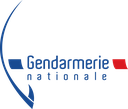
The Gendarmerie nationale is a military unit which answers to the French Ministry of Defence and Ministry of the Interior. It takes on policing functions in rural areas, while the Police nationale is responsible for urban areas.

Ècole des Officiers de la Gendarmerie nationale (EOGN), or officer school of the French Gendarmerie nationale, was founded in 1901 and is subordinate to the Gendarmerie schools.
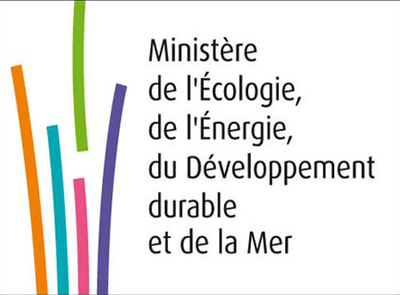
The French ministry for the environment - the Ministère de L´Écologie, de L´Énergie, du Développement durable et de la mer - is responsible in France for environmental policy, particularly in the fields of energy and climate protection. An efficient, sustainable and environmentally compatible transport system is of fundamental interest to Germany and France as mutually very important trading partners. Well-functioning transport links are also beneficial for the ordinary citizen and make the fruits of cooperation a tangible experience. This also applies to urban and housing policy where creative cooperation can improve the quality of life of each individual. Germany's Federal Ministry of Transport, Building and Urban Development and the French Ministry of Ecology, Sustainable Development and Energy are strongly committed to bilateral cooperation projects which contribute to sustainable development and economic growth. A focal point in this connection is increased collaboration on rail transport and the establishment of a High Ranking Franco-German Rail Group.

French national railway operator Société Nationale des Chemins de fer Français (SNCF) is represented in 120 countries with a 245,000-strong workforce and is one of the world's leading enterprises in the fields of transport, haulage and goods logistics with a turnover of € 32.6 billion.
Through its five divisions (SNCF INFRA: operation and administration of the rail network; construction, maintenance and engineering; SNCF PROXIMITÉ: regional transport, local rail transport in the Ile-de-France region, Intercités and Keolis; SNCF VOYAGES: high-speed passenger train transport (TGV, TGV and ICE, Thalys, Eurostar, iDTGV, Lyria, Elipsos, Gala, TGV Italie, Westbahn, NTV), long-distance buses (iDBUS) and voyages-sncf.com for online sales; SNCF GEODIS, GARES & CONNEXIONS: operation and development of French stations and multidisciplinary activities for their construction and realisation), the SNCF offers an extensive range of mobility solutions.

The Université de Technologie de Troyes (UTT) is one of three technical universities in France. It was founded in 1994 and today is one of France’s largest engineering colleges. The research activities at UTT are conducted by eight teams within the Charles Delaunay Institute (ICD). The Institute pursues an interfaculty approach as part of its special focus: risk management in science and technology.
Contact
If you have any questions or comments, please get in contact with:
Prof. Dr. Stefan Pickl (Project leader)
Universität der Bundeswehr München
Professur für Operations Research
Werner-Heisenberg-Weg 39
85577 Neubiberg
Telefon: +49 89 6004 2400
Email: Stefan.Pickl at unibw.de